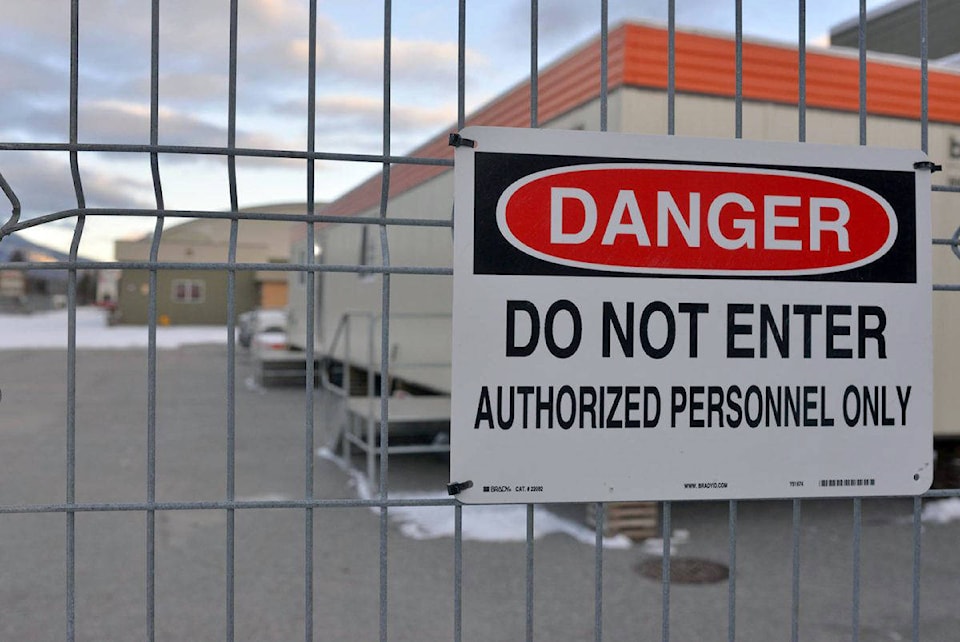Nearly a year ago, three lives were lost in an incident that would transform not only the Elk Valley, but other communities and workplaces across the country.
Ammonia is a colourless, toxic process gas commonly used as a refrigerant in a variety of industries, including recreational facilities such as ice arenas and curling rinks.
When an ammonia leak occurred at Fernie Memorial Arena on October 17, 2017, it resulted in three fatalities and the evacuation of 95 residents from nearby homes.
The arena tragedy devastated the Elk Valley community but it also set into motion a chain of events that would ultimately make workplaces and other communities around the province, and the country safer.
“The tragic loss of three lives at the Fernie Memorial Arena last year raised awareness across Canada about the risks of ammonia as a refrigerant,” said WorkSafeBC spokeswoman Trish Knight Chernecki.
“In our investigation report on the tragedy, the main purpose was to identify the causes and contributing factors of the incident so that similar incidents can be prevented from happening in the future.
“While it’s been one year since the tragedy, there is still much work to do. We’ve incorporated the findings of our incident investigation report into our ongoing ammonia-related prevention efforts.”
In late 2017, WorkSafeBC launched a three-phase ammonia inspection initiative to address ammonia safety throughout the province.
The initial phase, in collaboration with Technical Safety BC, included inspecting every ice rink and recreational facility in the province that uses ammonia as a refrigerant.
Out of the 223 arenas inspected, 181 used ammonia-based refrigeration systems. There were 1108 orders issued as a result of these inspections, as well as one stop-use order.
Phase two of the initiative took place earlier this year and focused on contractors conducting installations, maintenance and other activities on ammonia systems.
Meetings were held with consultants, engineers and contractors, and 30 firms were inspected to evaluate compliance in two main areas – exposure-control plans and emergency response – with 102 total orders issued.
Phase three of the ammonia inspection initiative is currently underway and focuses on other industry sectors that use ammonia, such as food processing and industrial chemical manufacturing.
“In addition, we are educating employers and contractors through targeted information sessions, outreach to municipal governments, online educational resources and presentations to employer associations,” said Knight Chernecki.
The Fernie arena tragedy prompted investigations by three agencies – the RCMP, WorkSafeBC and Technical Safety BC.
Both WorkSafeBC and Technical Safety BC have handed down their incident reports, along with a raft of recommendations aimed at preventing a similar occurrence.
Technical Safety BC made 18 recommendations that seek improvements to owner maintenance programs and organizational design; identification of leak hazards and professional disclosure of such hazards; training of owners representatives, operators and mechanics; secondary coolant system configuration and construction in anticipation of refrigerant leaks; and, public transparency and a culture of openness around technical systems.
Both WorkSafeBC and Technical Safety BC concluded the incident was caused by a faulty curling chiller that was put back into service despite a leak. WorkSafeBC also found occupational health and safety systems did not mitigate risks to workers, incident-response measures were not present, and the manufacturing process of the chiller tubes fostered corrosion.
The agency is yet to announce whether it will take enforcement action against the City of Fernie and Toromont Industries Ltd. (CIMCO Refrigeration) where violations of the Workers Compensation Act or the Occupational Health and Safety Regulation have occurred.
In response to the agencies’ findings, the City is working to improve its health and safety programs, and changing organizational structures so that safety and asset management are at a more strategic level.
